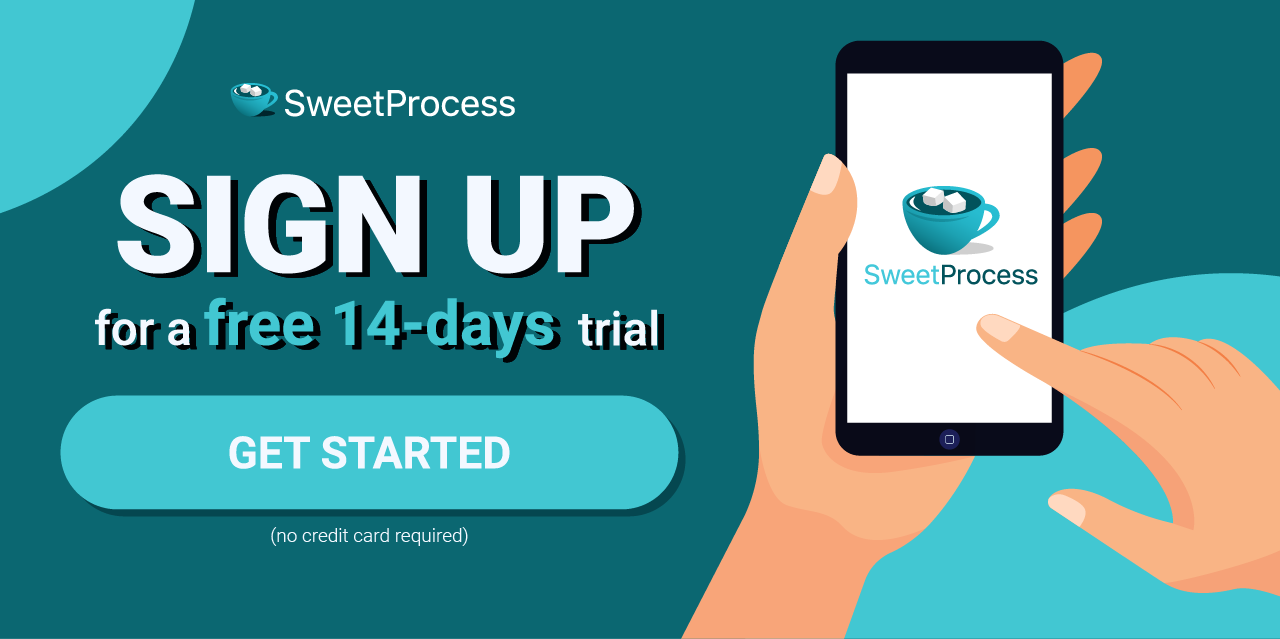Last Updated on July 8, 2025 by Owen McGab Enaohwo

Have you tried using SharePoint to manage your processes and other important business documents but aren’t happy with the experience?
Well, you’re not alone!
Microsoft’s SharePoint is one project management and collaboration tool with many businesses looking for a more flexible alternative that fits their needs.
Even though SharePoint has long been the go-to solution for managing content, documents, processes, and collaboration within an organization, its users are far from satisfied.
They want simplicity. They want ease of use. And they want more for their employees and customers.
One platform you can be sure does this well is SweetProcess.
But don’t take our word for it. You can use this link to try SweetProcess for FREE for 14 days without even entering a credit card, and you’ll see how it helps you better manage your business processes.
Table of Contents
Chapter 1: Why You Need an Alternative to SharePoint
Chapter 2: The 9 Best SharePoint Alternatives
Chapter 3: How to Choose the Right SharePoint Alternative for You
Chapter 4: How SweetProcess Can Help You Manage Your Processes and Procedures Better
Chapter 1: Why You Need an Alternative to SharePoint

Launched in 2001, SharePoint is a powerful web-based collaborative platform developed by Microsoft to serve as a comprehensive solution for managing content and sharing documents within an organization. It is designed to host other apps like ConvergePoint.
It is part of Microsoft’s suite of tools that integrate natively with Microsoft 365 (formerly Microsoft Office). It has become the most popular collaboration and content management tool since its inception. Over 85% of Fortune 500 companies reportedly use SharePoint.
You’re probably wondering: if it’s that popular, why are so many people searching for alternatives?
Below are some reasons people are looking for SharePoint alternatives, starting with the most obvious reason.
1. Cost
Most businesses can’t afford to purchase an entire suite of tools that their employees might not use or understand.
SharePoint licensing and infrastructure costs are significant, especially for smaller businesses or organizations with limited budgets.
Despite giving it a high score (9/10), a verified reviewer wrote as a con of SharePoint that the cost of managing it is high.
According to another review, even though Sharepoint is part of the Microsoft Office package, it is not free. It costs more to access the full license. There are many hidden additional costs, and it is pricey overall.
2. Complexity
SharePoint can be complex, requiring technical expertise to implement, customize and maintain.
A simpler and more user-friendly alternative will be appealing to many organizations.
According to a January 2023 reviewer of SharePoint, one of the few drawbacks of Microsoft SharePoint is its overwhelming capabilities for users unfamiliar with the platform. It can take some time for users to adapt to its various features and tools, and the learning curve can be steep for those new to SharePoint.
After giving SharePoint a one-star rating, another reviewer said SharePoint is not user-friendly or intuitive. You have to undergo training to create posts. And it should not be used as an engagement or internal communications tool.
3. Focus
SharePoint has many features, including those that many organizations may not require. Such organizations may seek alternatives that focus on their specific needs, like process management and workflow automation.
4. Integration
SharePoint has a Microsoft products bias. Even though it’s understandable—since it’s a Microsoft product itself—some organizations aren’t happy that SharePoint integrates better with Microsoft products than with other third-party tools and systems.
One review simply says SharePoint is clunky, cumbersome, and restrictive.
5. Outdated
It’s 2023, yet using SharePoint feels like you’re working with an app from the late 90s.
It loads slowly, is difficult to use, and has a clunky user interface.
According to an online review, compared to other solutions, SharePoint’s user interface is “lacking” and feels outdated.
In summary, organizations search for SharePoint alternatives to find simpler, more cost-effective and user-friendly solutions that better align with their specific needs, offer seamless integration, and provide a more tailored user experience.
When it comes to managing processes, only a handful of software solutions can confidently carry the tag “SharePoint alternative.”
This is a conclusion we have reached after combing the internet and analyzing over a hundred pieces of software.
Chapter 2: The 9 Best SharePoint Alternatives

Nine tools made our list of the best SharePoint alternatives for creating and managing processes, procedures and policies.
1. SweetProcess
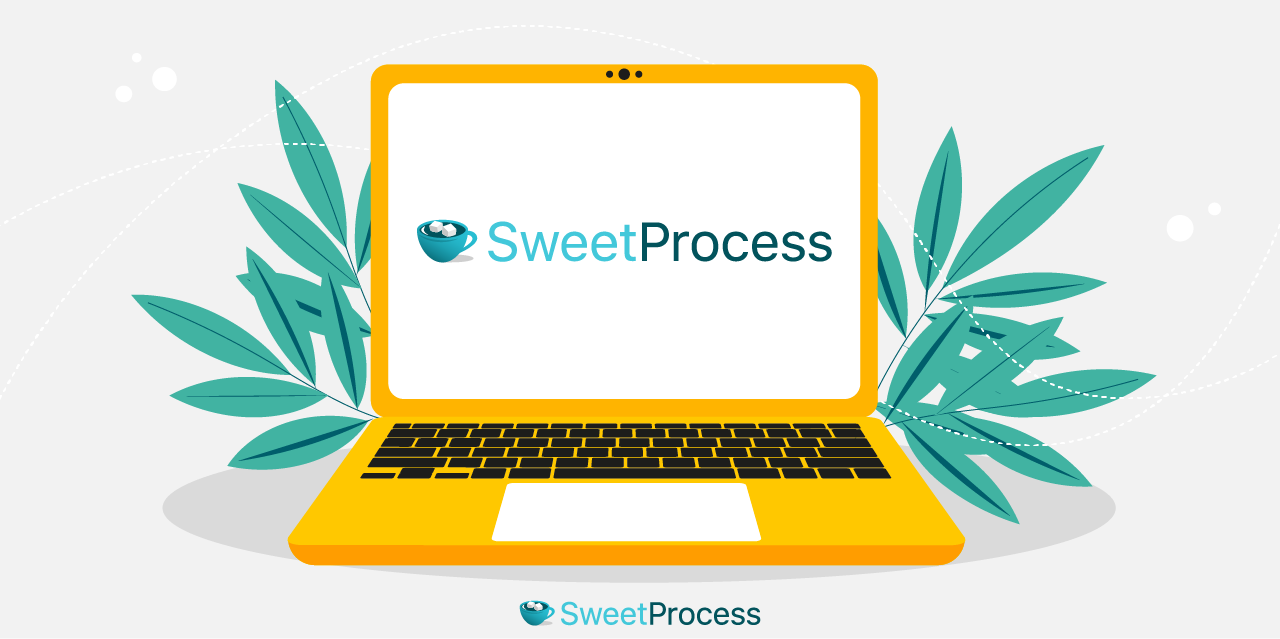
SweetProcess is an intuitive and user-friendly software tool specifically designed for documenting and managing processes within organizations.
Because of its structured and visual approach to process documentation, SweetProcess enables collaboration, transparency, and continuous improvement within organizations.
It allows teams to create step-by-step workflows, capture important procedures and instructions, and collaborate on process management.
SweetProcess easily becomes your organization’s centralized hub for processing knowledge, which becomes easily accessible to employees and enables effective onboarding and training.
Watch the short video below to learn more about SweetProcess including what it is and what it does.
Whether you are managing a large team or a small group of five, SweetProcess offers features that can help you drive business growth.
Below are some of them.
Features of SweetProcess
- SweetProcess allows you to create, document, and manage processes in an organized and easy-to-follow format, functioning effectively as a Document Generator for your business procedures.
- You can create visual workflows with step-by-step instructions, making it simple for employees to understand and follow processes.
- SweetProcess creates flowcharts automatically for you as you document your procedures and processes.
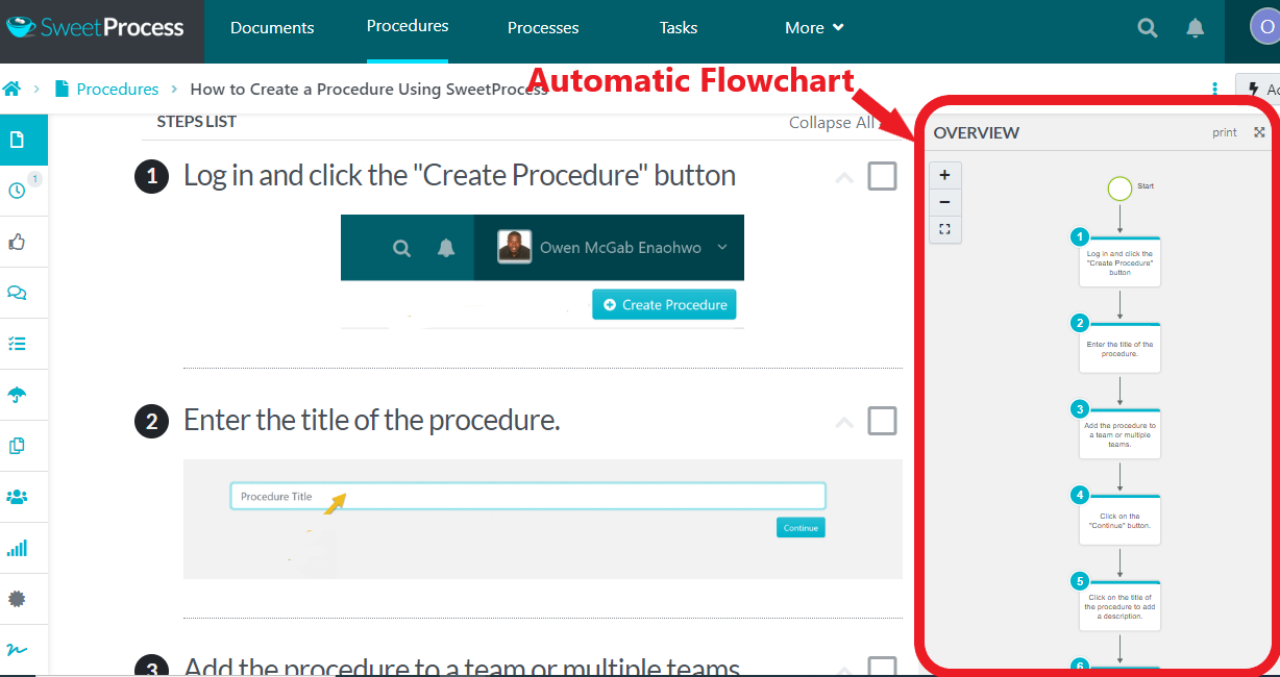
- It enables collaboration among team members by allowing them to suggest improvements, provide feedback, and update processes while working together.
- You can easily share processes created in SweetProcess with team members, clients, and stakeholders to ensure accessibility and transparency across the organization.
- You can use SweetProcess to create a knowledge base for your customers/clients.
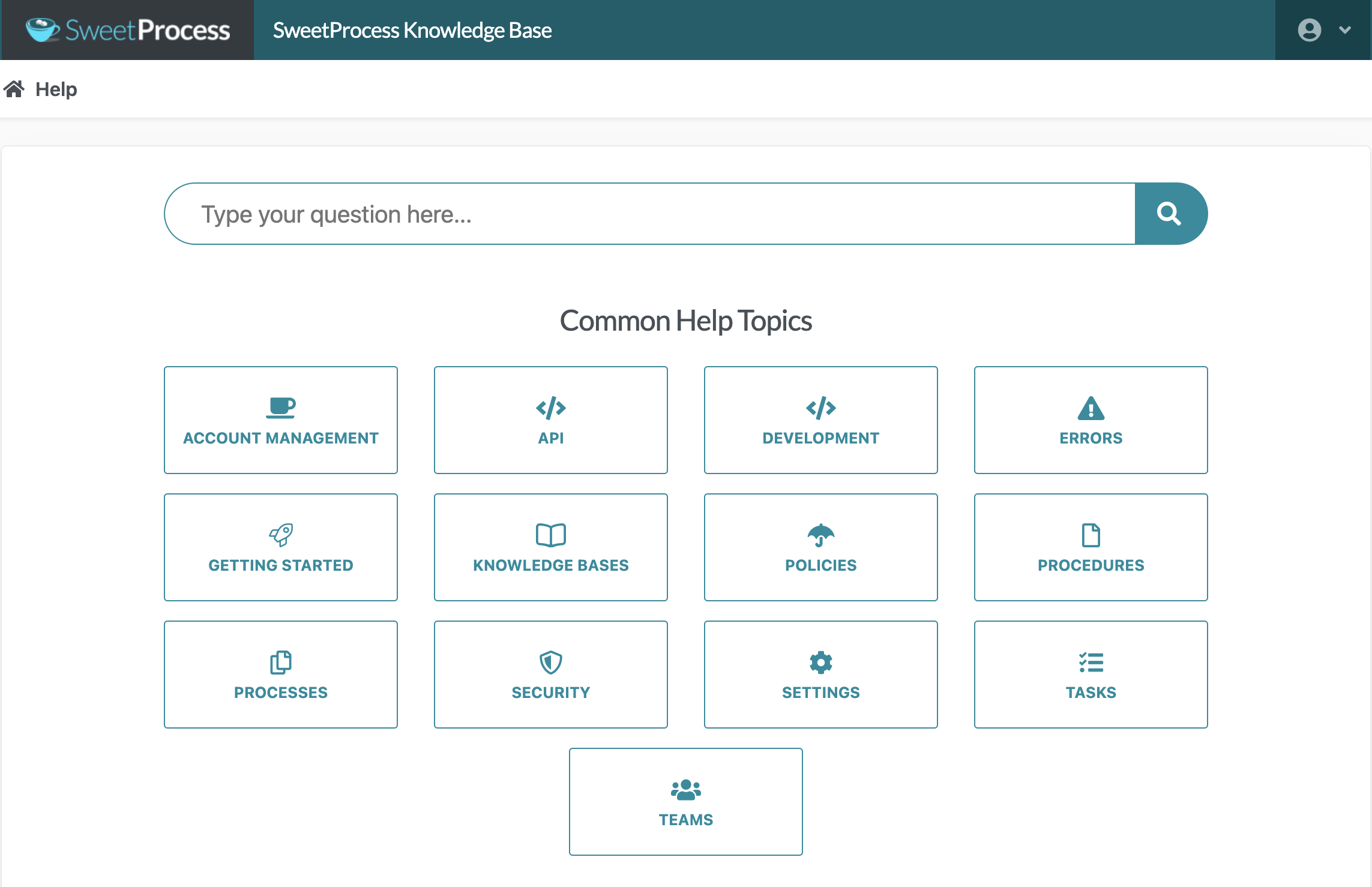
- You can assign tasks in SweetProcess to team members based on the procedures or processes they have documented.
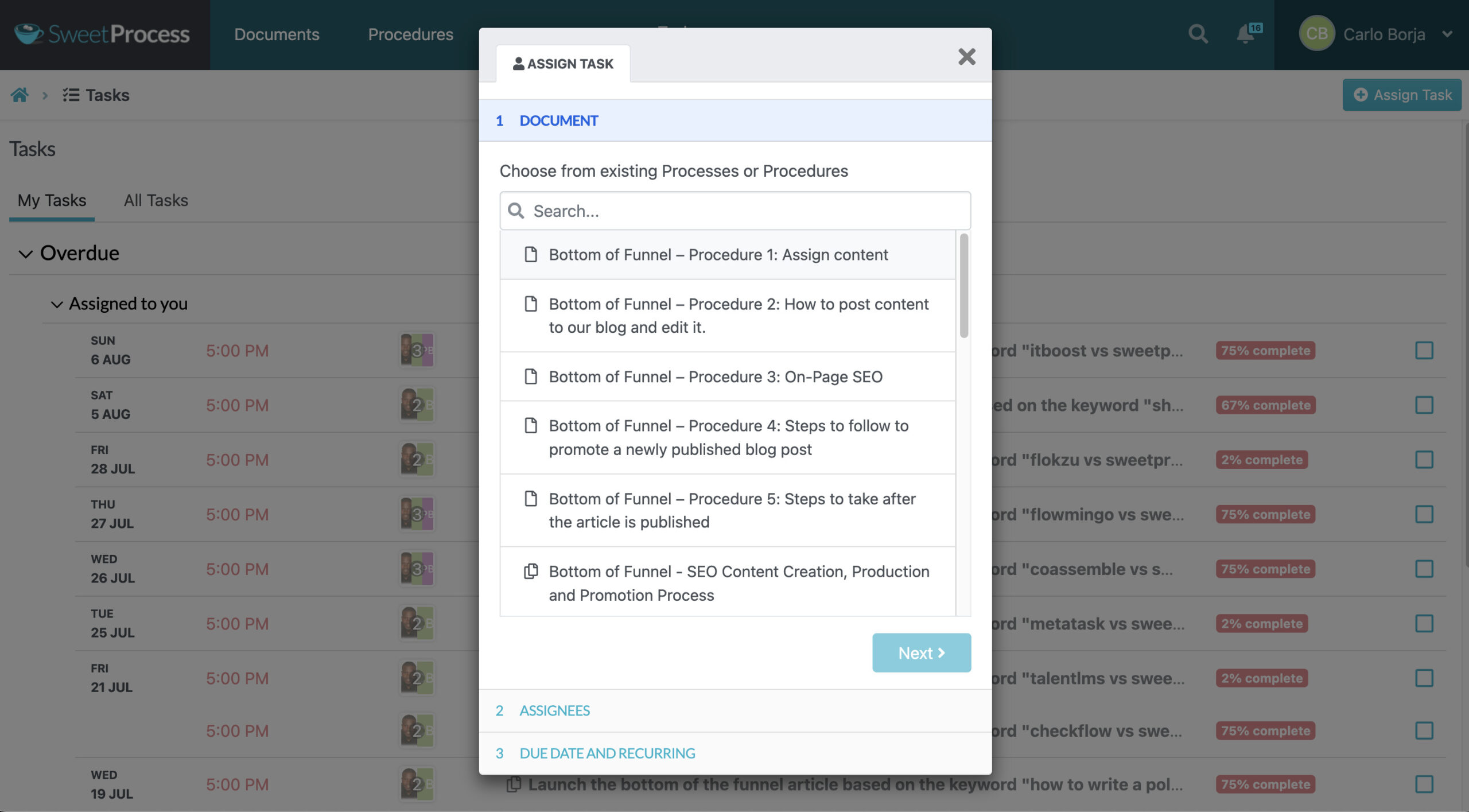
- You can monitor and track the progress of tasks assigned to users in SweetProcess.
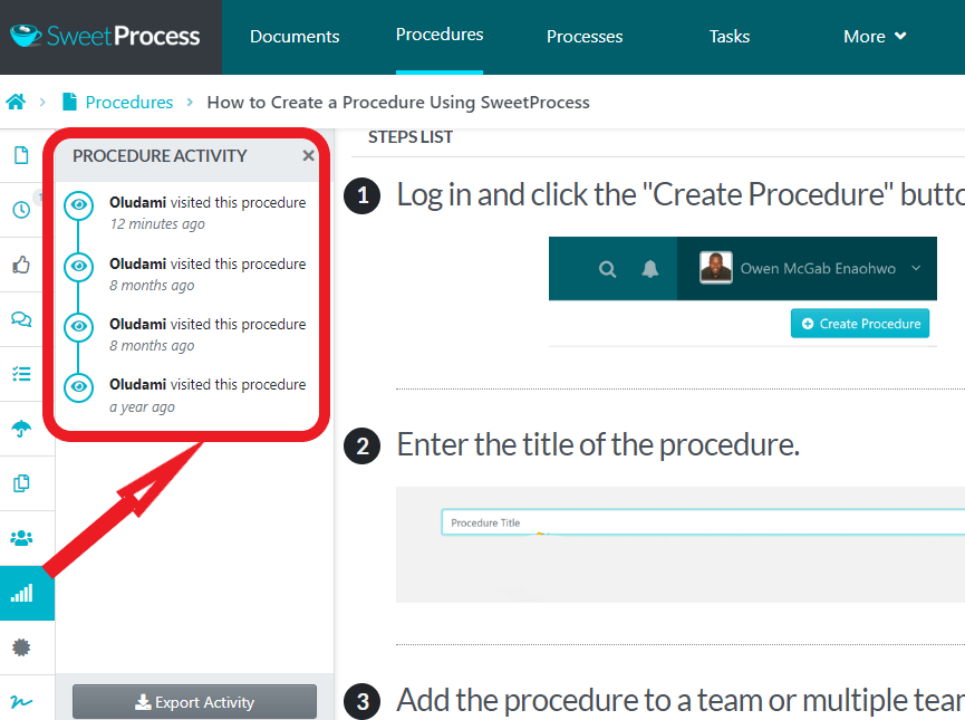
- SweetProcess maintains a version history of processes. This allows you to track changes, review previous versions, and keep an audit trail for compliance and accountability.
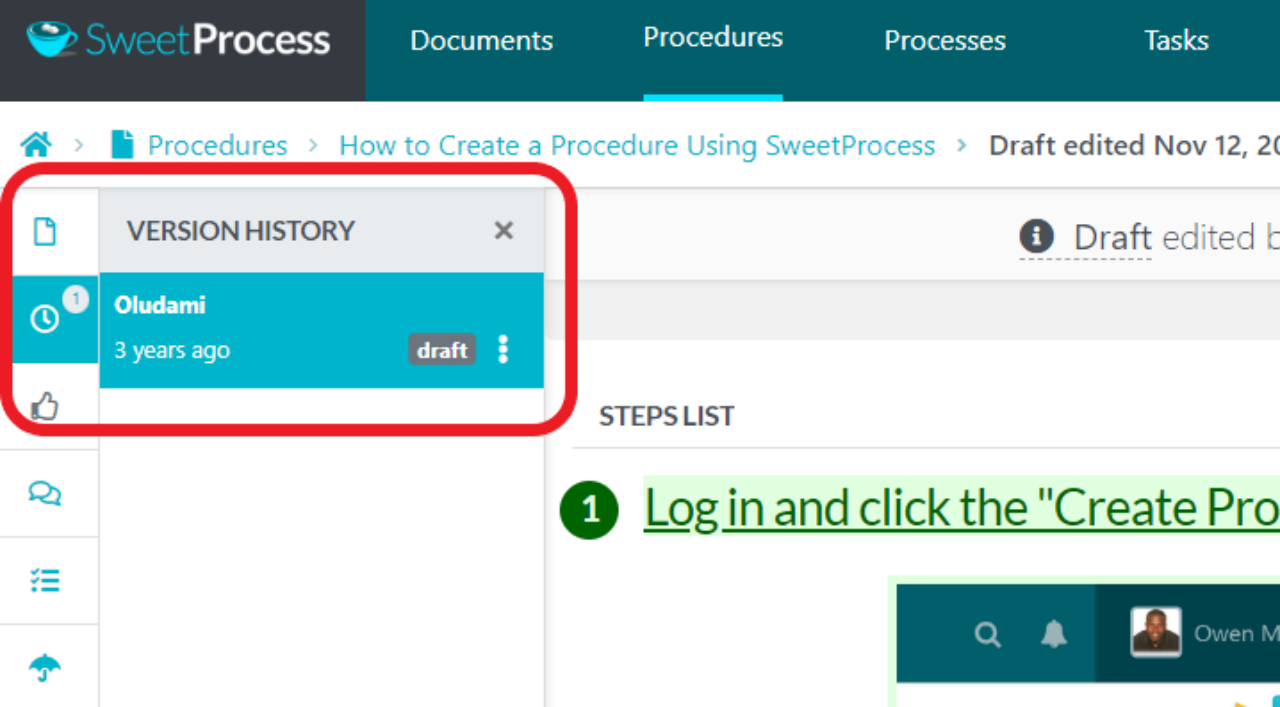
- Team members can be sent notifications and reminders for upcoming tasks and process updates.
- Role-based permissions are another smart feature of SweetProcess. This allows you to control access to processes or procedures, and give editing rights to users based on their roles and responsibilities within your organization.
- SweetProcess has the capability to integrate with various third-party tools and platforms.
- It also has analytics and reporting features, allowing you to gain insights into process performance, identify problems, and track the progress of your projects and tasks.
- You can now use AI to generate your procedures and policies in SweetProcess using SweetAI instead of creating them from scratch.
These are great features necessary for the growth of any organization. But what advantages does SweetProcess have over other business process management (BPM) solutions like SharePoint and the other alternatives listed here?
Here are some:
Pros
- User-friendly and intuitive interface to help users manage processes on any device without extensive training
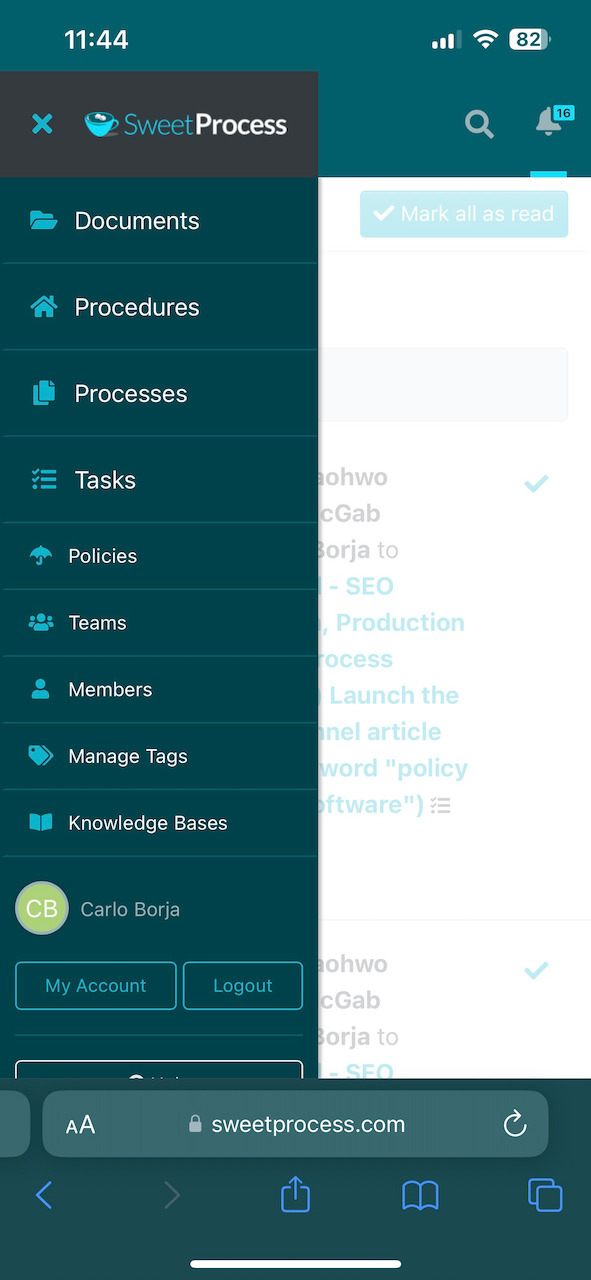
- Streamlined and focused business process management solution
- Valuable resource for employee onboarding and training
- Easy to organize and find documents
- Prioritizes data security and compliance
- Seamless integration, connectivity and exchange of data with other systems
- Centralized and easily-accessible repository for processes
- Easy to revert documents to previous versions through version history and audit trail
If you like the features and pros, then wait till you see how easy it is to create processes on SweetProcess.
Step-by-Step: How to Create a Procedure on SweetProcess
You can use SweetProcess to create and manage processes, procedures, and policies.
The steps are similar, but for the sake of demonstration, here’s a quick walk-through of how to create a procedure on SweetProcess.
1. To create a procedure, log into your SweetProcess account and click the “Create Procedure” button. Or click on the dropdown button beside it to import (upload) your existing procedure into SweetProcess.
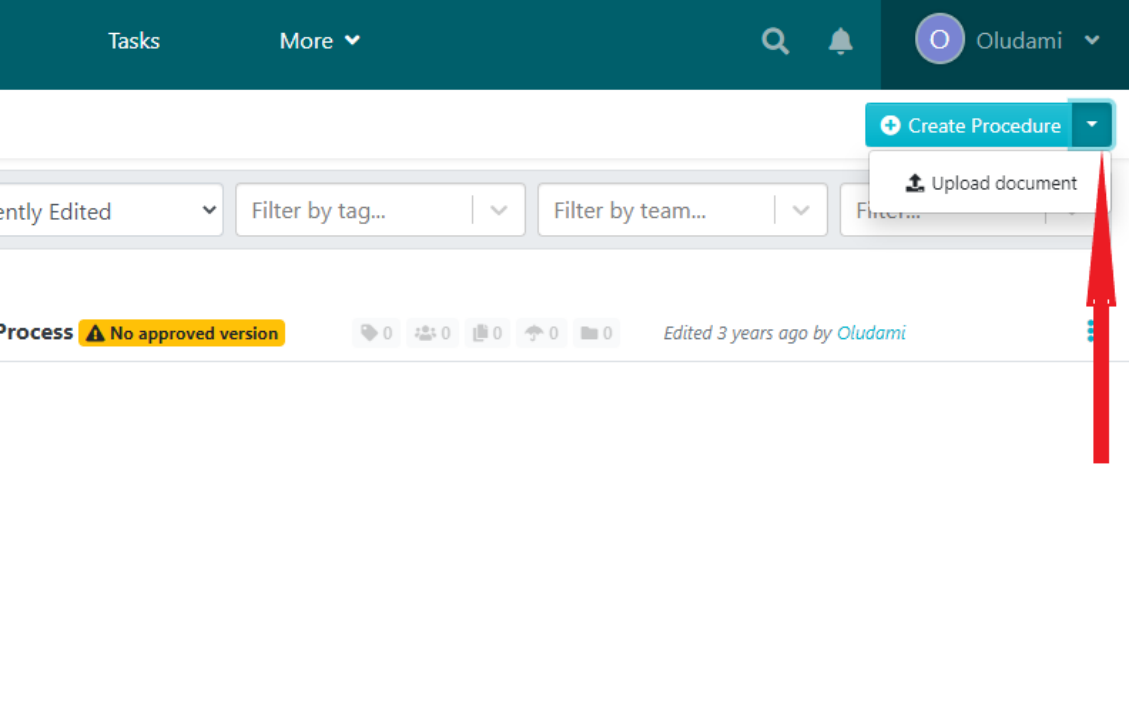
2. Add a title to your procedure. This will make finding it later easy.

3. Add the procedure to your team or multiple teams.

4. Click on “Continue.”

5. Add a description to your procedure.
6. You can add a tag to your procedure. This will assign an index keyword or phrase to the procedure so that it can be quickly and easily located and identified.
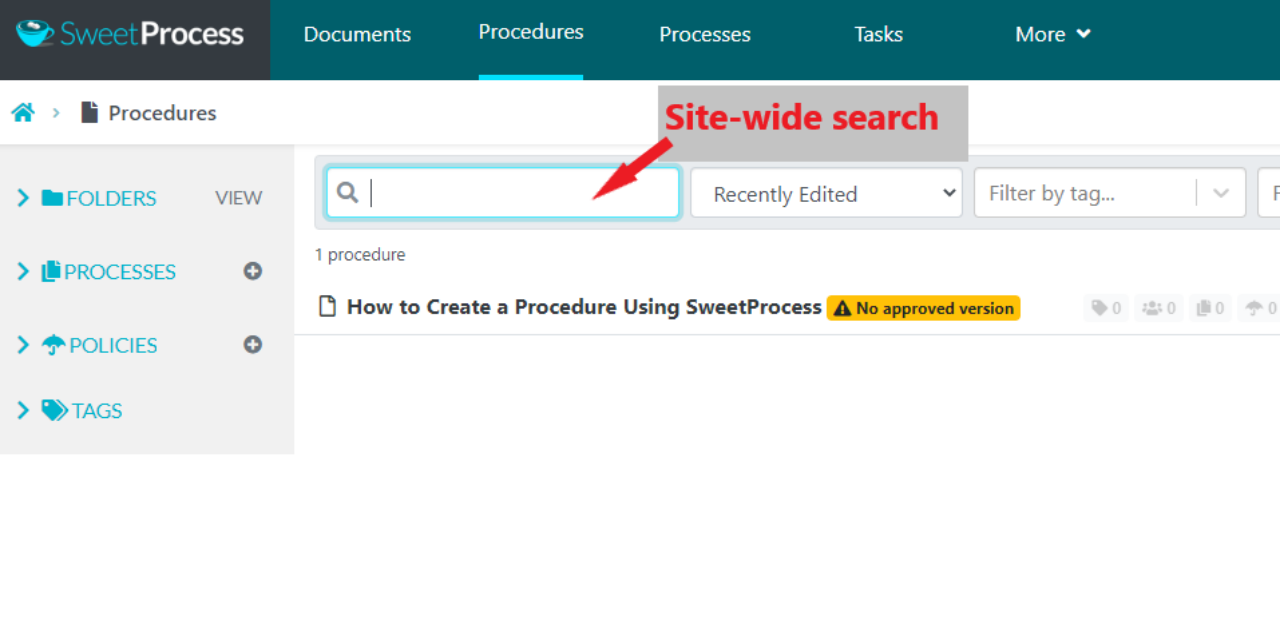
7. Click on “Add a Step” to begin.

8. Add a title and description to the step.

9. Do you have images, videos, links, etc.? You can add them too.

10. Save the draft before adding another step.

11. Click on “Add a Step” to add a new step.
12. Repeat 7, 8, 9, 10 and 11 until all the steps you need are added.
13. Once you’re done, click on “Approve” to approve your new procedure.
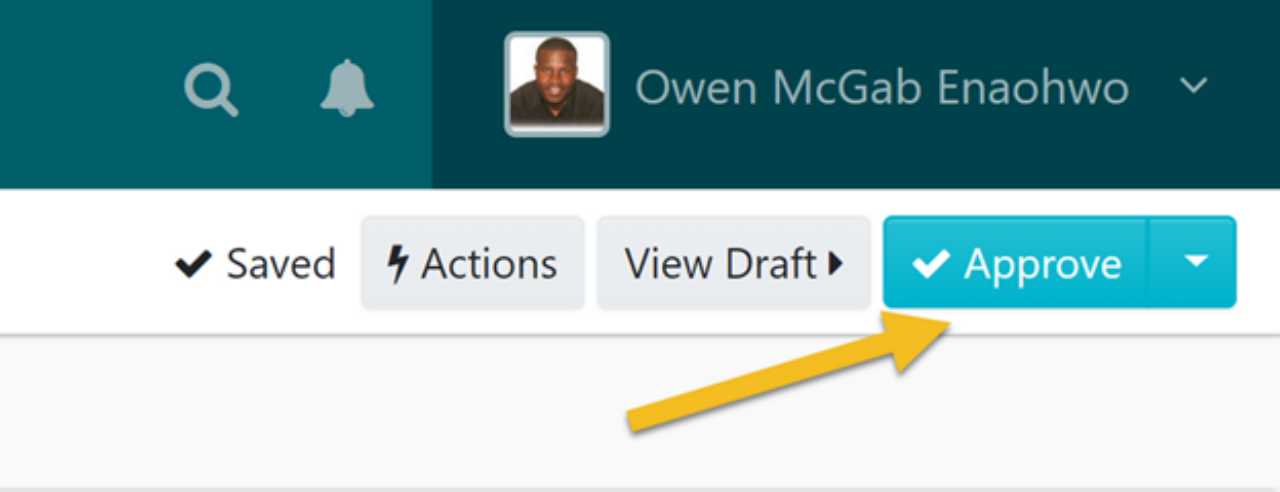
14. If you don’t have such permission or authority, you can request approval with the click of a button.

15. You’re all set. To check out your new procedure, just click on “Procedures.”
16. You can also export your procedures and other processes from SweetProcess.
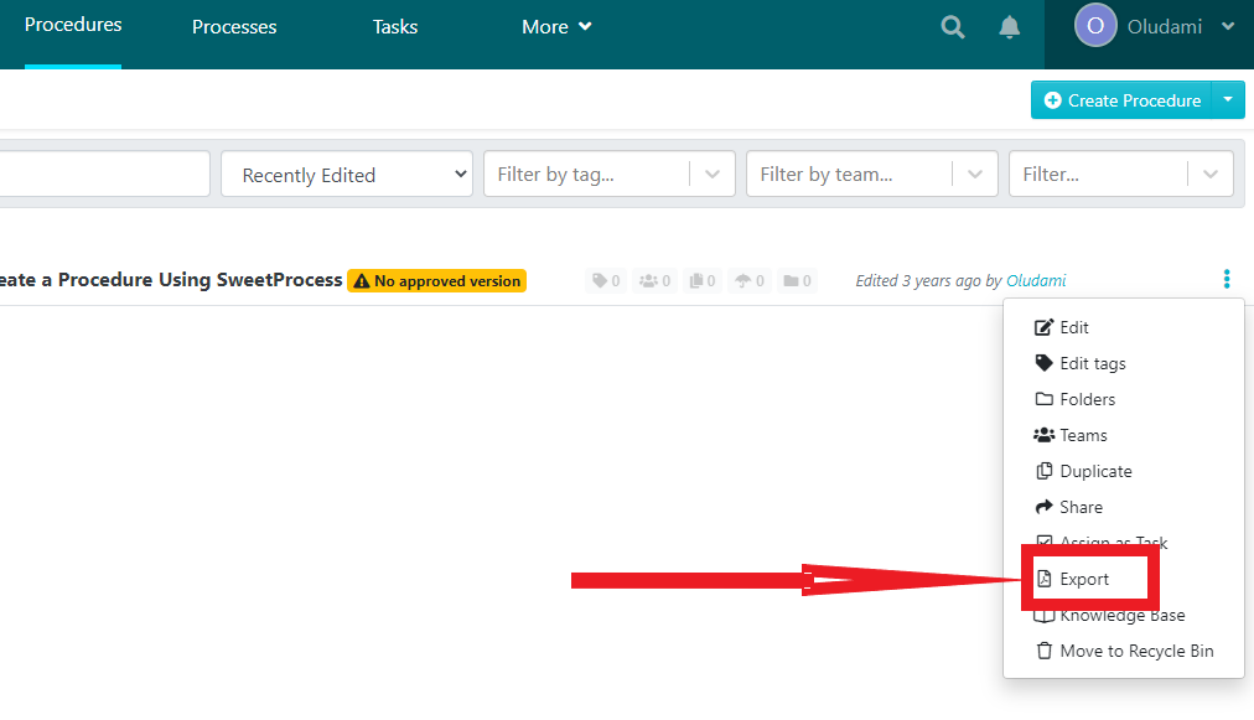
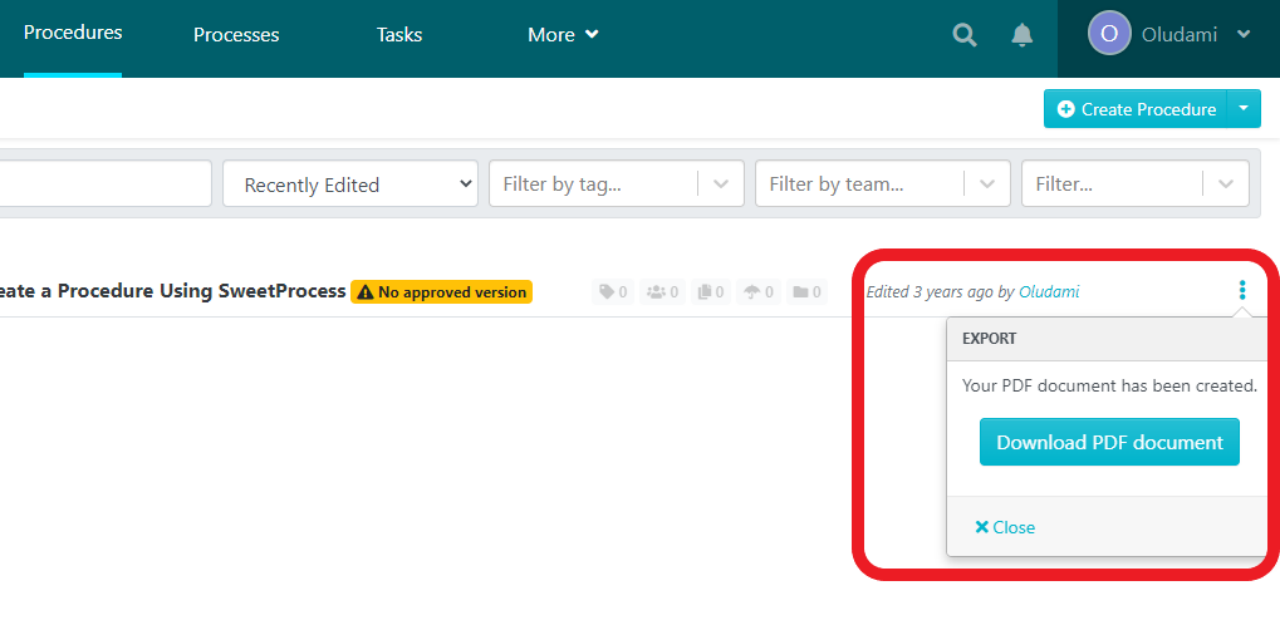
You’re probably wondering: with all these amazing features, how much is SweetProcess?
Pricing
SweetProcess offers a pricing structure that allows you to only pay for team members who use the product.
There is just one subscription plan and one price. Unlike most other tools, there are no membership tiers or other pricing options.
For a team of up to 20 active members, SweetProcess charges $99/month.
If you have more than 20 active members, then you’re charged $5 per additional member.
The monthly price drops to $82.50 per month for up to 20 members and $4.17 per additional member with the yearly subscription plan. That’s a 16% discount.
SweetProcess, unlike other software, does not continue to charge inactive members. When a member becomes inactive, you are notified and are no longer charged for their membership on your subscription.
You can sign up for a free 14-day trial here just to test out the features before you even start paying. Don’t worry, you don’t need a credit card for the free trial.
If you would like to get a feel for SweetProcess before you even sign up, then use this live demo.
And if you’d like to learn about other people’s experiences using SweetProcess, then you’re welcome to check out as many case studies as you’d love.
One great story is that of MiPA, an award-winning virtual PA (personal assistant) support and call-answering services company in the UK.
How MiPA is Scaling Up With Streamlined Business Processes
Before implementing SweetProcess, MiPA faced several challenges within its operations. These included inefficiencies, lack of standardized procedures, and difficulties in training new employees.
The absence of clear processes resulted in inconsistencies, errors, and prolonged training periods, hindering MIPA’s growth potential.
Solution
To address these challenges, MiPA turned to SweetProcess.
They utilized the platform’s user-friendly interface to document and standardize their processes comprehensively.
By documenting each step involved in their operations, MiPA gained clarity and consistency across their workflow. This facilitated effective training and reduced errors, allowing employees to perform tasks efficiently.
Results
The implementation of streamlined processes yielded impressive results for MiPA. The company experienced significant time and cost savings as a result of eliminating inefficiencies.
Training time for new employees was reduced, enabling them to contribute to the company’s growth more quickly. Existing employees were able to cover for their colleagues seamlessly during absences, minimizing disruptions. The enhanced efficiency and productivity led to improved customer satisfaction and a notable increase in revenue.
MiPA’s success story highlights the importance of investing in process optimization tools and strategies to drive sustainable growth and competitiveness in the market.
More specifically, it shows the positive impact of streamlining one’s business processes using SweetProcess.
You can read MiPA’s full success story here. You can also click here to find more stories of how others are using SweetProcess to run and grow their organizations more effectively.
Are you ready to streamline your own operations?
Sometimes having competent employees isn’t enough. You need to empower them with the right tools. All MiPA had to do was implement the right system. You can do that too, starting today for free.
Yes, you can use SweetProcess for 14 days without paying a dime, and you don’t need a credit card for that. Simply click here to get started! (Or click on this link: https://www.sweetprocess.com/accounts/signup/)
2. Confluence

Confluence is a team collaboration and documentation software developed by Atlassian for creating, organizing, and sharing content within a structured wiki-like environment.
Confluence allows teams of all sizes to collaborate on projects, share knowledge, and create and edit documents in real time.
It definitely can be considered a good alternative to SharePoint, especially for organizations looking for robust collaboration and documentation features.
Features of Confluence
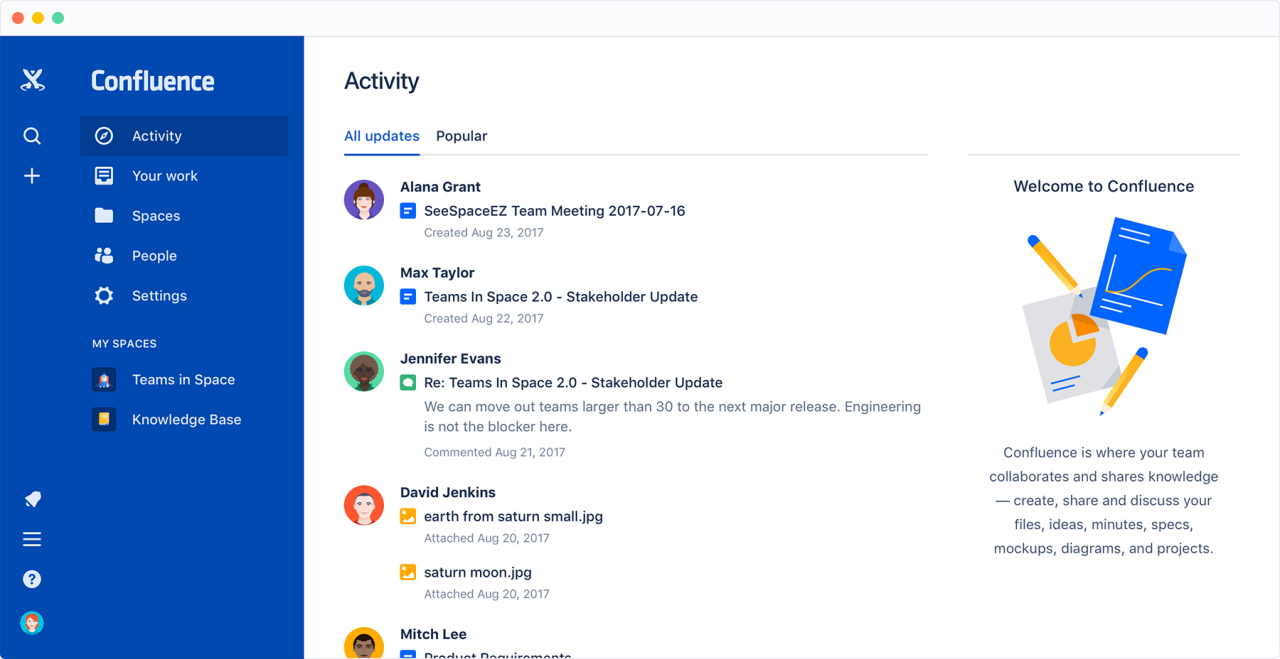
Below are some of the features of Confluence.
- Confluence allows for real-time collaboration, and with this, team members can create, review and edit documents together.
- It has a user-friendly and intuitive interface that makes it easy for both technical and non-technical users to create documents and collaborate.
- It has a flexible and customizable structure for organizing documents, pages and spaces.
- Confluence enables users to track document changes, view revision history, and revert to previous versions through its built-in version control feature.
- Users can effortlessly locate relevant documents or information through Confluence’s advanced search capabilities, including full-text search, filtering, and sorting.
- Confluence integrates well with other software tools, both within and outside the Atlassian ecosystem.
- It also has a vast marketplace of plugins that makes it easily customized and extended to meet specific needs.
- It offers mobile apps for iOS and Android.
Pricing
Confluence has several plans you can choose from depending on your needs and budget.
- Free: Free for up to 10 users. Only on their monthly subscription.
- Standard: $5.74 per user, per month (or $580 per year for up to 10 users).
- Premium: $11 per user, per month (or $1,100 per year for up to 10 users).
- Enterprise: Available for more than 800 users and billed annually. Contact sales for price.
Pros
- Easy to quickly find and retrieve documents with the powerful search feature.
- Mobile apps for access and collaboration on the go.
- Version control and page history tracking for easy document management.
- Extensive plugin marketplace for customization and integration with third-party tools.
- User-friendly.
Cons
- Steep learning curve for new users, especially for the advanced features.
- Provides limited formatting options compared to dedicated word processing software.
- Pricing might be a consideration for organizations on a tight budget.
- Dedicated resources may be required for the maintenance and administration of the system.
- Lacks advanced document-centric features like document lifecycle management or metadata management.
3. Google Workspace

Formerly Google Suite (or G-Suite), Google Workspace is a popular cloud-based productivity suite that offers a range of tools and features for communication, collaboration, and document management.
It includes popular applications like Gmail for email, Google Drive for file storage and sharing, Google Docs, Sheets, and Slides for creating, editing, and managing documents, and more.
From features that facilitate collaboration to document management and productivity, Google Workspace can also be a strong alternative to SharePoint.
Features of Google Workspace
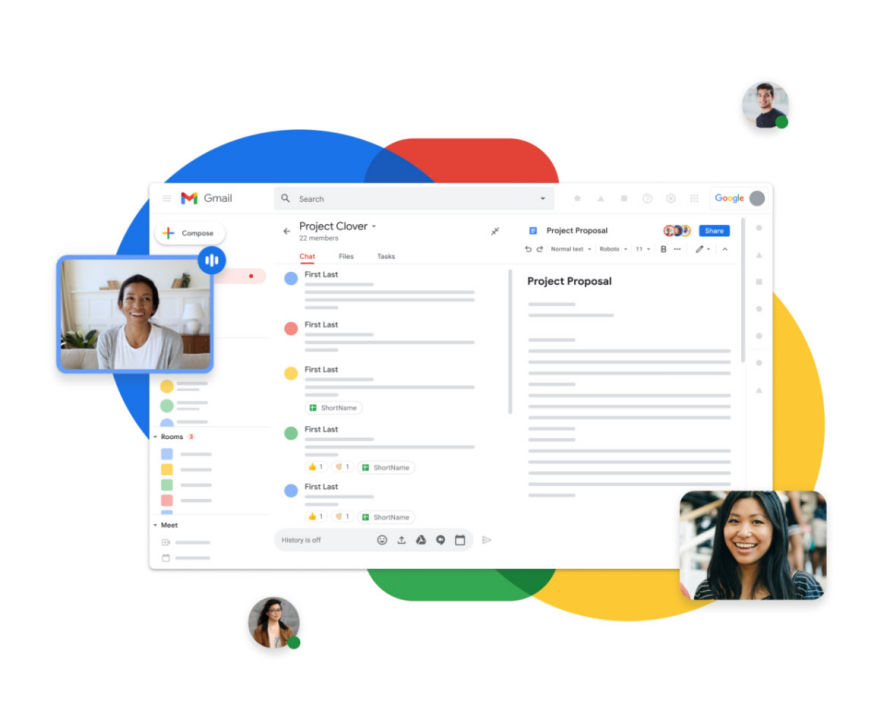
Here are some features of Google Workspace:
- Provides cloud-based collaboration tools that allow team members to create, edit, and share documents in real time.
- Apps within Google Workspace integrate seamlessly with each other, making it a comprehensive productivity and communication tool.
- With Google Drive as one of the tools inside Google Workspace, users can store and organize documents, files, and folders in a centralized location, accessible from anywhere and on any device by team members with access.
- Enables easy sharing of documents with collaborators, with customizable permission settings.
- Docs, Sheets, and Slides offer version history tracking, and allow users to view, restore, or compare previous versions of documents.
- Powerful search capabilities across connected services.
- Robust security measures including data encryption, two-step verification, access controls, and compliance certifications.
Pricing
- Business Starter: $7.20 per user/month, or $6/mo when billed annually.
- Business Standard: $14.40 per user/month, or $12/mo when billed annually.
- Business Plus: $21.60 per user/month, or $18/mo when billed annually.
- Enterprise: Contact sales for pricing.
- Offers a 14-day free trial for every plan.
Pros
- Collaboration tools foster seamless teamwork and productivity.
- You can control access levels to files and documents, and ensure data security.
- Enhances team productivity with simultaneous editing, commenting, and discussion within documents.
- Easy and quick to find documents and files through the robust search functionality.
- Availability of extensive third-party integrations and add-ons.
- Gets regular updates and improvements.
- Ensures the protection and privacy of organizational data.
Cons
- The sharing and permission settings can be complex and challenging for new users.
- Limited customization options compared to some other document management software.
- Depends on an internet connection for full functionality.
- May have less advanced document management features compared to specialized software.
4. Bitrix24

Bitrix24 is a comprehensive business management and collaboration platform that offers a wide range of features to streamline communication and manage documents, projects, and business processes.
Bitrix24 provides organizations with a centralized platform to enhance productivity, foster collaboration, and automate workflows with its integrated suite of tools, including social intranet, CRM, project management, and document collaboration.
It is a comprehensive solution for businesses of all sizes as it is designed to facilitate effective teamwork, improve communication, and streamline business operations.
Features of Bitrix24
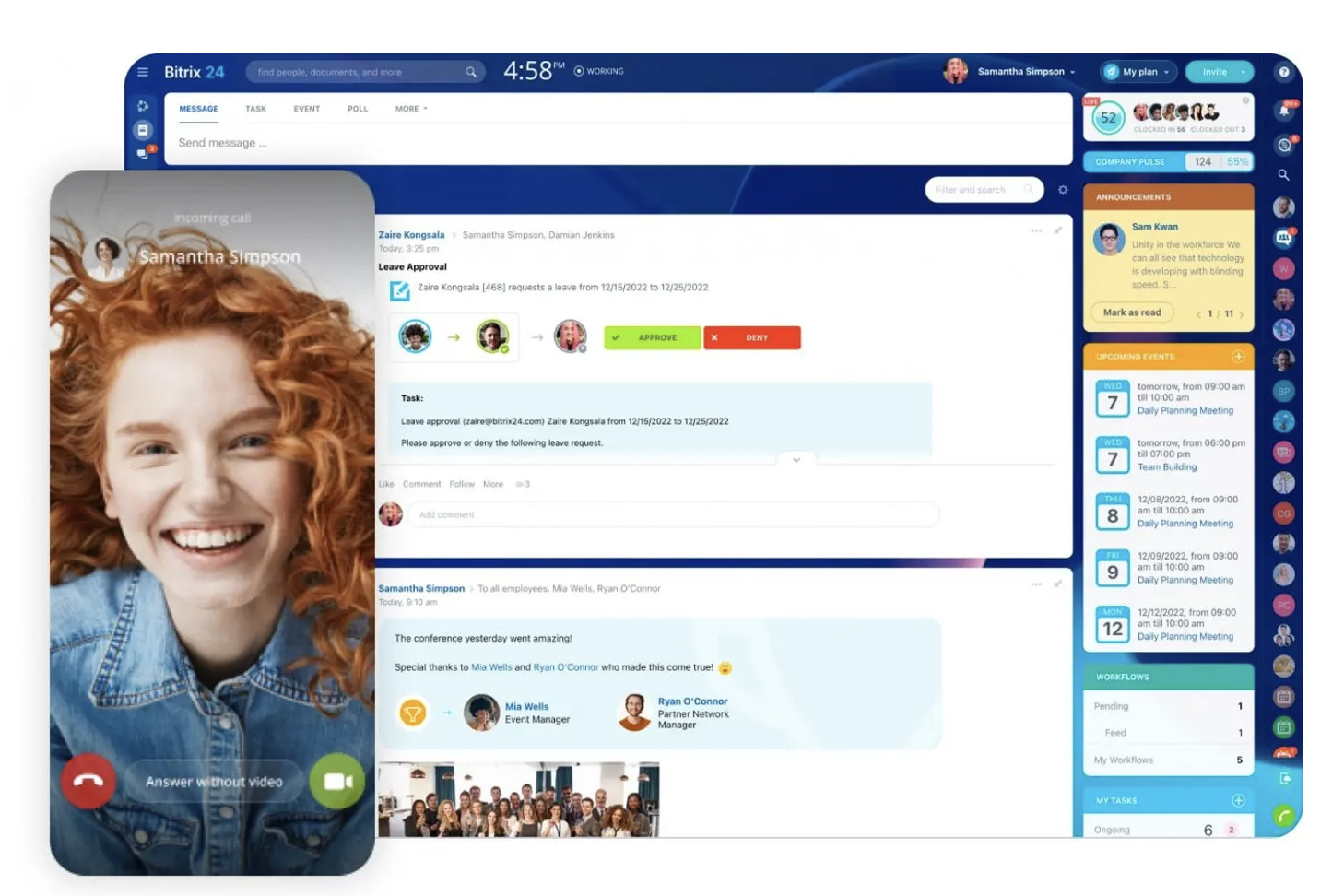
Here are some key features of Bitrix24 that make it a strong SharePoint alternative:
- Bitrix24 provides a wide range of collaboration tools including chat, video conferencing, social intranet features, etc.
- It offers centralized document storage with efficient management capabilities like version control, access permissions, and document collaboration.
- It also includes project management features like task management, project collaboration, Gantt charts, and time tracking.
- Bitrix24 includes CRM functionality with sales automation, lead management, contact and deal tracking, and customer communication tools.
- It features a visual business process automation tool, enabling the creation and automation of workflows and approval processes.
- Its social intranet platform comes with activity streams, news feeds, and employee profiles to foster internal communication, knowledge sharing, and team collaboration.
- Bitrix24 integrates with popular third-party tools like Google Drive, Office 365, and more.
- Bitrix24 also provides mobile apps for iOS and Android.
Pricing
- Free: 100% free for Unlimited users
- Basic: 5 users, $61/month
- Standard: 50 users, $124/month
- Professional: 100 users, $249/month
- Enterprise: Starts at 250 users, $499/month
- Prices are for all users in each package, not per user.
- 20% discount when you pay yearly.
Pros
- Collaboration tools enable seamless communication and teamwork.
- Social intranet features for internal communication and knowledge sharing.
- Document collaboration features including commenting and real-time editing.
- Mobile apps for access and collaboration on the go.
- Integration options allow for seamless data exchange and collaboration.
Cons
- User interface may be complex for some users and require some learning curve.
- Lower storage limits on the free plan with higher costs for additional storage.
- Some users have reported occasional performance issues.
- Customization options for document workflows are limited.
5. Box
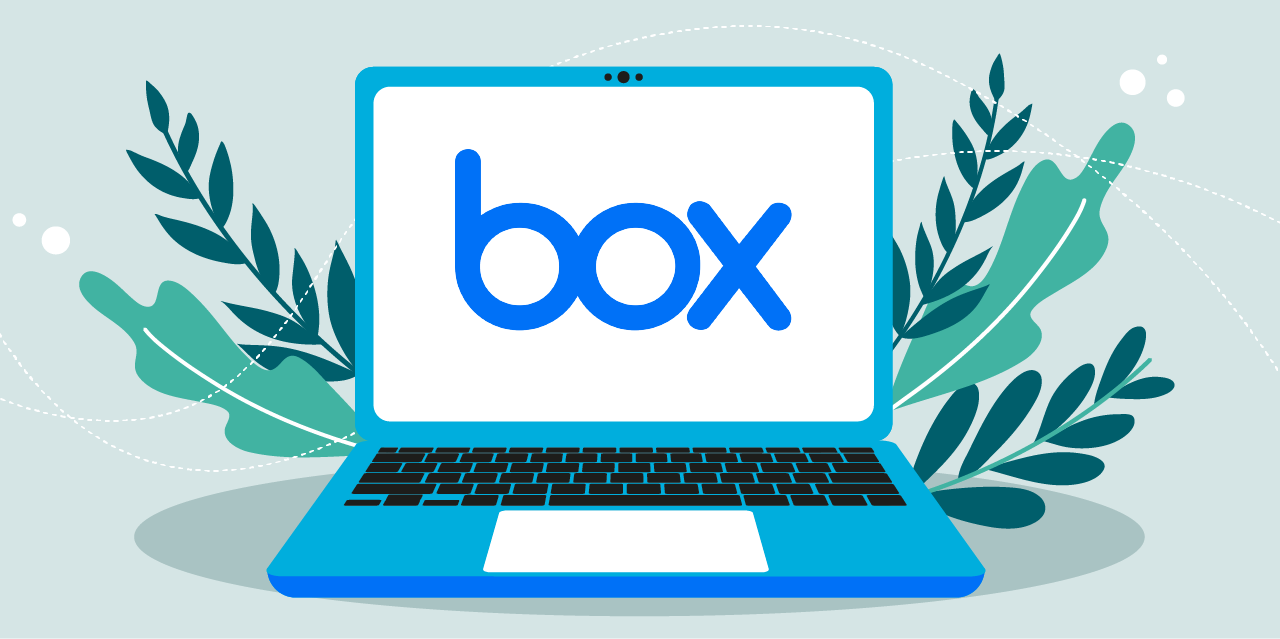
Box is a cloud-based document management and collaboration tool that offers secure storage, file sharing, and content management features.
It’s a versatile solution for organizations looking to streamline document management and enhance collaboration among team members thanks to its prioritization of seamless collaboration, integration, robust security, and mobile accessibility.
All these make it a compelling alternative to SharePoint, especially for teams seeking a cloud-based solution.
Features of Box
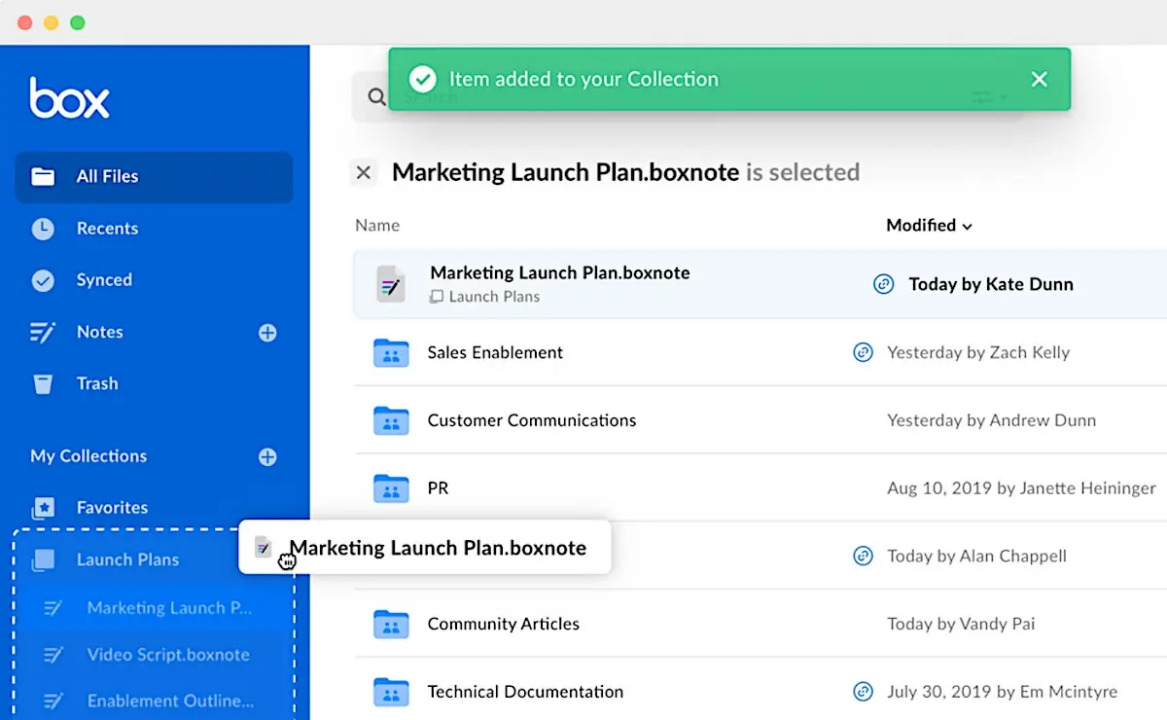
Here are some key features of Box:
- Box provides granular file-level security in addition to version control and access permissions.
- Offer real-time document collaboration tools, features that allow multiple users to work on documents simultaneously with comments, annotations, and task assignments.
- Box prioritizes security, offering enterprise-level encryption, data loss prevention, and compliance with industry regulations like HIPAA, GDPR, and ISO 27001.
- Box offers APIs and developer-friendly tools for building custom applications and integrations on top of the platform.
- It provides reporting and analytics tools for monitoring usage as well as robust admin controls for managing user access, permissions, and security settings.
- Box offers iOS and Android mobile apps that allow users to access, view, and collaborate on documents from anywhere.
- Box provides desktop and mobile syncing for offline access and automatic updates.
- Box integrates with a variety of applications, including Microsoft Office, Google Workspace, Salesforce, and more.
- Box allows easy sharing of documents with internal and external users.
Pricing
Individual Plans:
- Individual: Free, single user
- Personal Pro: $16 per month, single user
- Business Starter: $7 per user/month, a minimum of three users
- Save 25% on each plan for annual subscription
Business Plans:
- Business: $20 per user/month
- Business Plus: $33 per user/month
- Enterprise: $47 per user/month
- Enterprise Plus: Custom
- Minimum of three users
- 25% discount on each plan for annual subscription
Pros
- Secure cloud-based storage for documents.
- Integrates with popular third-party applications.
- Strong security measures and compliance with industry regulations.
- Mobile accessibility through iOS and Android apps.
- Developer-friendly tools and APIs.
- Admin controls for user management, security settings, etc.
- Workflow automation to help streamline business processes.
- Content sharing and syncing for easy file access.
- Real-time collaboration features for multiple users.
Cons
- Advanced features require higher-tier and more expensive plans.
- Storage limitations on lower-tier plans.
- Limited customization options for workflows.
- User interface can be overwhelming for some users.
6. Zoho Docs

Zoho Docs is a cloud-based document management and collaboration platform. It provides users with a range of features for storing, sharing, and collaborating on documents.
It is part of the larger Zoho ecosystem, which includes a wide range of productivity and collaboration applications such as Zoho Writer, Zoho Sheet, Zoho Show, and Zoho CRM.
Zoho Docs is unique for its seamless integration within this larger Zoho ecosystem, thereby providing a comprehensive suite of productivity and collaboration tools including advanced features such as real-time collaboration, Smart Sync, and robust document security controls.
Features of Zoho Docs
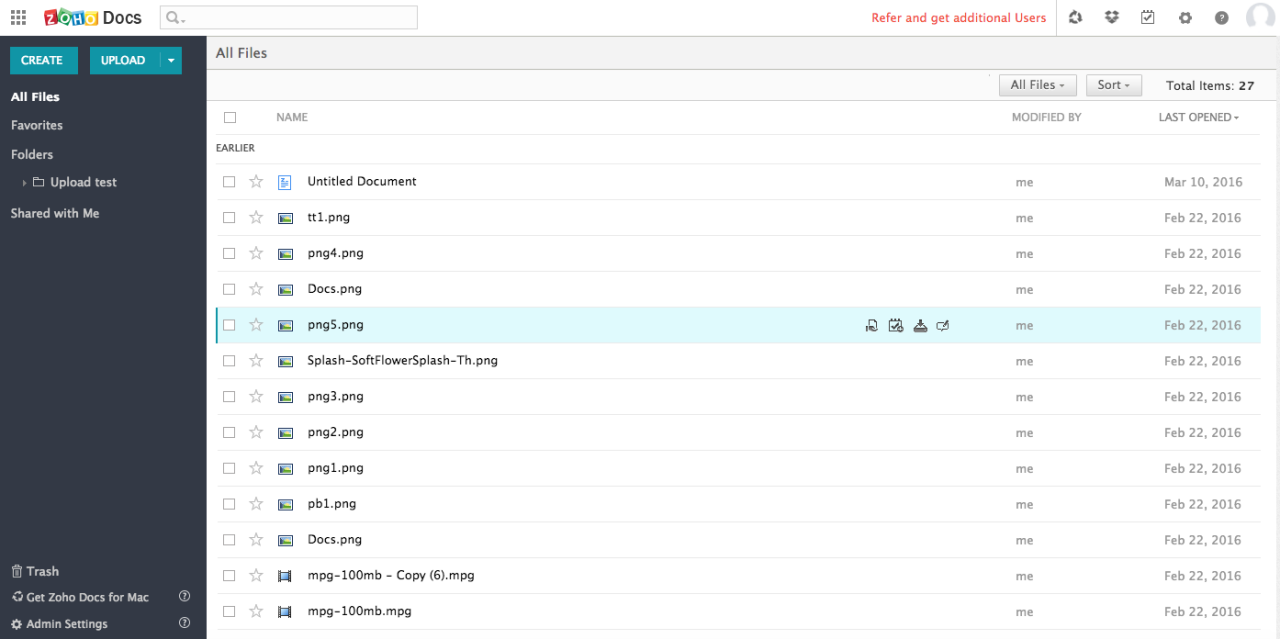
Here are some key features of Zoho Docs:
- Zoho Docs provides cloud-based storage for documents, with folder organization, version control, and granular access permissions.
- It offers built-in online editing tools and annotation features to enable collaborative document review without needing additional software.
- Provides admin controls for managing user access, permissions, and storage quotas, along with reporting and analytics features for monitoring usage.
- Zoho Docs’s mobile apps for iOS and Android devices enable users to access and collaborate on documents while on the go.
- Documents can be easily shared with internal and external users, with options for secure links, password protection, and expiration dates.
- Task assignments, commenting, and track changes are some of Zoho Docs’s features that enable real-time collaboration on documents.
- Zoho Docs provides encryption, user access controls, and compliance with industry regulations like GDPR and HIPAA.
- It offers workflow automation capabilities that allow users to automate repetitive tasks and create custom processes.
Pricing
- FREE: $0, up to five users
- Standard: $5 per user/month
- Premium: $8 per user/month
- Free trial available.
Pros
- Real-time collaboration and co-editing features.
- User-friendly interface.
- Prioritizes data and content security.
- Mobile apps for on-the-go access.
- Cost-effective pricing plans.
- Workflow automation to streamline processes.
- Seamless integration with other Zoho applications.
Cons
- Advanced features may require higher-tier plans.
- Integration options limited to the Zoho ecosystem.
- Customer support response time can be slow.
- Customization options are somewhat limited.
7. Nuxeo

Nuxeo is a powerful and flexible content services platform with comprehensive solutions for content management, workflow automation, collaboration, and integration.
Nuxeo’s extensive customization options, scalability, and advanced features help to empower organizations to effectively manage and leverage their content assets while promoting collaboration and productivity within teams.
Nuxeo proves to be a viable alternative to traditional document management systems like SharePoint as it offers a robust set of tools and functionalities to meet the diverse needs of modern businesses.
Features of Nuxeo
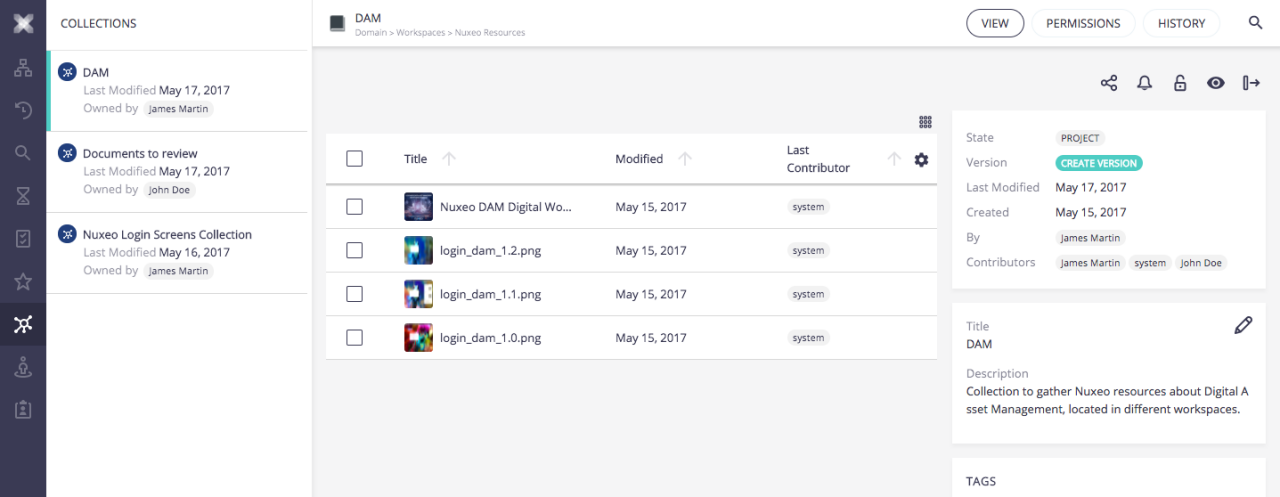
Here are the key features of Nuxeo:
- Nuxeo provides powerful content management functionalities that allow organizations to create, store, organize, and retrieve a wide range of content types, including documents, images, and videos.
- It allows seamless integration with other business systems, applications, and third-party tools.
- Nuxeo is flexible and can be deployed either in the cloud or on-premises, depending on the preferences and requirements of the organization.
- Nuxeo provides security and compliance features such as granular access controls, encryption, audit trails, and compliance with various industry standards and regulations.
- Nuxeo’s advanced search capabilities make it easy to find and retrieve content quickly.
- It also offers analytics and reporting features to help gain insights into content usage, user behavior, and system performance.
- Nuxeo provides flexible metadata and taxonomy management to help classify and categorize content according to user’s specific requirements.
- It provides a scalable architecture, with extensive customization options that allow organizations to tailor the platform to their specific needs.
Pricing
- Nuxeo pricing varies based on customer support and system requirements.
Pros
- Robust content management capabilities.
- Cloud and on-premises deployment options.
- Strong focus on security and compliance.
- Extensive integration options with other systems and tools.
- Flexible metadata and taxonomy management.
- Advanced search and analytics for efficient content retrieval.
Cons
- The learning curve is steeper compared to other document management tools.
- Some advanced features may require additional configuration or development.
- Out-of-the-box integrations are limited, compared to other solutions.
- User interface and experience could be improved.
- No defined pricing model.
8. Revver

Revver (formerly eFileCabinet) is a comprehensive document management software designed to streamline the storage, organization, and retrieval of digital documents within an organization.
It provides organizations a centralized repository for managing documents, with features like workflow automation, advanced search, secure file sharing, and version control.
Revver aims to enhance productivity and efficiency in document-centric processes, with a strong focus on security, compliance, and collaboration.
Features of Revver
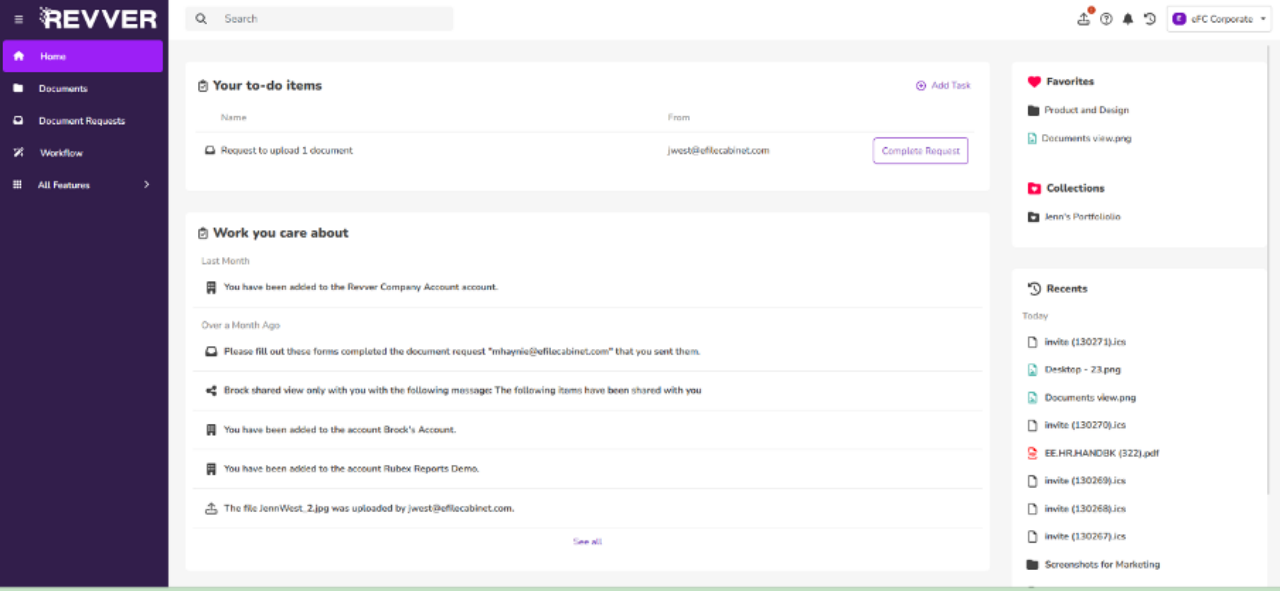
Here are key features of Revver as a SharePoint alternative:
- Revver provides a centralized and organized repository for storing and managing documents, which also allows users to easily search, retrieve, and share files.
- It prioritizes data security and compliance with features like file encryption, role-based access controls, audit trails, and conformance to industry regulations.
- It includes features like document routing, task assignments, and notifications, which enable users to automate document-centric processes and streamline workflows.
- Revver offers version control, ensuring that the most up-to-date version is accessible while maintaining a complete version history.
- Revver facilitates collaboration with its shared folders, document annotations, and file sharing capabilities.
- It has mobile apps to allow access and collaboration on the go.
- Revver supports scanning of physical documents and utilizes optical character recognition (OCR) technology to extract text and make documents searchable.
- Its client portal enables secure sharing and collaboration with clients and external stakeholders, while also maintaining confidentiality and privacy.
- It also provides backup and disaster recovery capabilities.
Pricing
- $2,000 per year for an account with at least two users (according to Business News Daily, Revver doesn’t publicly list its prices).
Pros
- Centralized and organized document repository.
- Scanning and OCR capabilities.
- Integration options with popular business tools.
- Secure client portal for external collaboration.
- Backup and data recovery ensures document safety, even in unforeseen circumstances.
- Version control and document tracking.
Cons
- User interface could be more intuitive.
- Learning curve for new users.
- Limited customization and integration options compared to some other solutions.
- Advanced features may require additional configuration or training.
9. Glasscubes

Glasscubes provides teams and organizations with a versatile and user-friendly platform to streamline their work processes through a wide range of features, including document management, file sharing, project management, communication tools, client collaboration, workflow automation, and customization options.
It facilitates efficient collaboration and document management within teams and with external stakeholders, with emphasis on security, ease of use, and seamless integration.
Features of Glasscubes
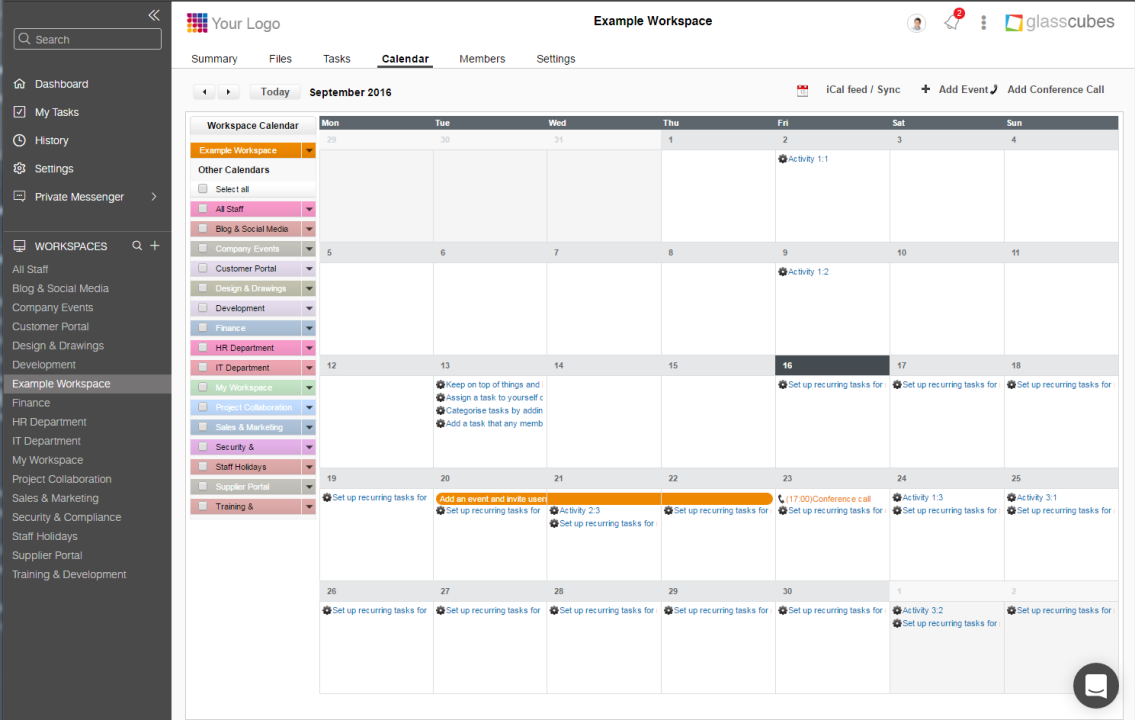
Here are the key features of Glasscubes:
- Glasscubes makes it easy to search, access, and collaborate on files due to its centralized platform for storing, organizing, and managing documents.
- Glasscubes includes project management capabilities that allow teams to create tasks, set milestones, track progress, and assign responsibilities.
- Gantt charts and task dependencies help users with visualizing project timelines.
- Users can securely share files and collaborate with people inside or outside the organization—team members, clients, stakeholders, etc.
- Glasscubes offers discussion forums, shared calendars, group chats, and other communication features for effective communication and collaboration.
- It ensures data security through SSL encryption, data backups, and regular security audits.
- It also ensures document security by allowing administrators to set permissions for documents and folders.
- Glasscubes provides a personalized user experience by allowing organizations to customize their workspace with branding elements like logos and color schemes.
- It provides a dedicated client portal for secure collaboration and communication with clients in a controlled and branded environment.
Pricing
- Team: $25 per month
- WorkGroup: $50 per month
- Enterprise: $100 per month
- Offers free trial
Pros
- Centralized document management and organization.
- Project management capabilities.
- Strong focus on data security and permissions management.
- Dedicated client portal for secure collaboration with outsiders.
- Integrates with popular productivity tools.
- Customization options for branding and personalization.
- Mobile apps for on-the-go access and collaboration.
Cons
- Some advanced features may require additional training or configuration.
- Limited third-party integrations compared to more well-known platforms.
- May not be as widely used or adopted as some other SharePoint alternatives.
- User interface could be improved and further refined—and made modern.
There you have it, nine carefully selected tools you can use as alternatives to SharePoint in managing your processes, policies and procedures.
However, you can’t use all nine. You need to choose one. How do you go about choosing the best SharePoint alternative for your organization?
Chapter 3: How to Choose the Right SharePoint Alternative for You

We’ve streamlined the long list of SharePoint alternatives down to the best nine for you. But it’s ultimately left to you to make the final decision of which tool to go for.
To make it even easier, based on the pros and cons of the software analyzed, here are some factors you should consider in choosing the perfect SharePoint alternative.
1. Your specific needs: This is the simplest and best factor to consider. What specific needs are you trying to meet with a business process management (BPM) tool? Ensure the software you settle for can fulfill your process management needs.
For example, do you run a remote team and need features like collaboration, audit trail, and assigning of roles? Then go for software that has those capabilities.
2. Ease of use: This is one of the biggest cons of SharePoint, according to user reviews. Make sure you consider how user-friendly, accessible, and intuitive the alternative is when choosing one.
3. Customization: You should consider the level of customization available to tailor the software to your specific process management needs.
4. Cost: Consider the overall cost of the software, including licensing, maintenance, and any additional fees, and ensure it fits within your BPM software budget.
5. Security: Consider the level of security provided by the software to protect sensitive process information and comply with the standard data privacy requirements and regulations.
6. Integration: You want to ensure that the alternative you choose can seamlessly integrate and exchange data with other third-party tools and systems you currently use within your organization—and the ones you are considering.
7. Support and training: How easy is it to get support if you ever get stuck using the software? What documentations, training materials, and other resources are available from the software’s company to help you implement seamlessly? These are questions you must answer when deciding on the alternative to choose.
8. Reviews: Research your SharePoint alternatives before choosing, and especially look out for reviews made by verified users—both positive and negative. This will give you insights into what you can expect, based on the experience of others.
9. Trial: The good thing is that most software solutions allow you to try their software for free before you make any commitment. You can try out your alternative of choice to be sure it suits your process management needs.
Now you have learned about the nine best SharePoint alternatives and factors to consider in choosing the one that best suits your organization.
To further help you streamline your decision, next we discuss how SweetProcess helps you to better document and manage your processes, procedures, and policies.
Don’t worry, it costs nothing to try SweetProcess. See for yourself if it fulfills your BPM needs. In fact, you don’t even need a credit card to get started so you’re not in any way stuck if you don’t like it.
Click here to start your free 14-day SweetProcess trial.
Chapter 4: How SweetProcess Can Help You Manage Your Processes and Procedures Better

You’ve already seen the features of SweetProcess, its advantages over other process management tools, and how easy it is to create processes in SweetProcess.
Add that to the fact that, without any bias, SweetProcess generally checks the box for all the factors you should consider when choosing a SharePoint alternative, then you’ll agree that SweetProcess is the ideal BPM (business process management) software for your organization.
With SweetProcess, documenting and managing your processes, policies, procedures and other documents important to the smooth running of your organization becomes very easy.
And as you already know, you have the opportunity to try SweetProcess for free, without even entering your card details. We are that confident it will not just work for you— you’ll fall in love with how much it makes your life simpler.
But rather than tooting our own horn, in this section you’ll learn how other people and organizations have used SweetProcess to make running their businesses easier.
How ShipCalm Resolved Its Growth Pains by Streamlining Its Business Processes

Ted Fogliani, the process-driven CEO of ShipCalm, an e-commerce focused logistics company, was keen on streamlining the operations at ShipCalm when he founded the company, but all the tools he came across initially did not meet his standards. They fell short in one area or the other.
The absence of an effective system was also telling on his employees’ efficiency as they had limited information to execute tasks.
The Problem
Ted and his team members relied heavily on work instructions to be efficient. Their growing customer base came with several challenges that were difficult to manage in the absence of a solid workflow system.
Both his employees and the facilities were getting stretched beyond their limits, and he needed to fix it immediately before it got out of hand.
The Solution
Having used several workflow systems previously, Ted knew exactly what he needed when he moved onto the e-commerce logistics terrain.
Creating an enabling work environment for his employees and satisfying his customers were top on his agenda, so he sought a workflow tool that would enable him to achieve them. A trial of SweetProcess was all the convincing he needed that he had found the right system.
Results
Ted shared with us the specific ways they are using SweetProcess in his company:
1. Employee Training and Onboarding
When employees underperform in handling clients’ projects, the organization takes the fall. Ted makes sure that his employees are properly trained on the tasks they are handling before they get to work. Thanks to SweetProcess, he can track their training and assess their competence.
“I can assign people to be trained on tasks and I can track that training. I come from manufacturing medical devices where I actually had to prove to the FDA that my people touching it were approved.”
SweetProcess is also helpful in ShipCalm’s employee onboarding as new employees can be directed to the SOPs in the system to learn all they need to know.
2. Business Process Documentation
It was also important to Ted that his team members were able to use the workflow tool without getting confused, and he found that in SweetProcess.
“I wanted to be able to write a procedure quickly and I wanted anybody with a reasonable training skill set who could type to be able to do one very easily.”
3. Employee and Customers’ Knowledge Bases
The flow of information in an organization can be imbalanced in the absence of a go-to knowledge base.
With SweetProcess, the company now has a central knowledge base for its employees. The information they need for any tasks is just a click away.
Ted and his team also created a customer knowledge base out of customer feedback to improve the user experience.
4. Shared User Experience
According to Ted, the biggest game-changer of using SweetProcess is the ability to share his customers’ desired user experience with them using the system’s visual aid. Customers can see exactly what is being done by themselves to get a sense of it.
You can read the complete ShipCalm case study here.
Another great customer success story is that of Forensic Analytical Consulting Services (FACS).
How Forensic Analytical Consulting Services Built a More Efficient Workforce by Documenting Its Business Processes Effectively

The Problem
The team at FACS had SOPs in PDF files, but nobody was looking at them. The SOPs were buried in folders in their servers.
Employees who needed help with their tasks would rather ask Kevin Trapp, the director of operations, about it than check the documented processes because they were not helpful.
“I was burning up a ton of my time and other people’s time just trying to chase this stuff down and reiterate the same thing over and over.”
The Solution
Kevin decided it was time to go a different route. Part of his goal was to be able to link to specific SOPs instead of having team members read an entire document to find specific tasks.
He admits that he was initially skeptical about SweetProcess as he was not sure of the outcome, but he soon realized that the system was very easy to use.
The Results
Adopting SweetProcess at FACS was a collective effort. From what Kevin says, it was all worth it at the end. Here are specific areas they have benefitted from using SweetProcess:
1. Effective Business Process Documentation
SOPs documented with PDF files were not living up to expectations.
With SweetProcess, however, they are now able to document SOPs that are comprehensive. Team members can find the specific information they need without looking through the entire document.
2. Seamless Employee Onboarding and Training
The organization has grown in recent years, leading to the hiring of new employees. Onboarding a high number of new employees manually was demanding, as it required so much time and resources.
Adopting SweetProcess lifted the employee onboarding and training weight off Kevin’s shoulders. New and established employees are now more confident in executing their duties because they can get the help they need on their own without constantly asking someone else.
“It’s a component of my outbound communication saying here’s what we’re asking you to do and here’s the SOP outlining all that entire process.”
3. Accessible Central Knowledge Base
Having a central knowledge base where everyone can access all information is the biggest testament of using SweetProcess for Kevin.
“The best testament I can give is that, similar to how people call facial tissue Kleenex, our company now says ‘Is there a SweetProcess for that?’ They don’t say SOPs or anything—literally that’s what I get requests for.…”
Click here to read FACS’s full case study, including a word of advice from Kevin for streamlining your business operations.
Chapter 5: Conclusion

The positive experiences and great results these businesses—and thousands of others—have using SweetProcess only demonstrate that it indeed is the number one best SharePoint alternative for managing business processes.
You can click here to read more case studies to see how businesses of every kind are using SweetProcess to simplify and streamline their business operations.
You can also click here to watch video testimonials of happy SweetProcess users like Dr. Richard Rasmussen Jr., DDS of Implant and Periodontal Therapy, who said, “SweetProcess is basically a very standardized, online, true operational manual for any kind of business.”
You can replicate the success of these organizations in your own business by signing up for a 14-day free trial of SweetProcess. No credit card is required.
This is the best deal you can get anywhere. You have absolutely nothing to lose—not even the few minutes it would take you to fill in your card details—if you don’t like SweetProcess after trying it for 14 days.
From experience, however, we know you’ll love SweetProcess when you see the different ways it makes your life easier as a business leader. And, perhaps, we’ll be able to add your success story or testimonial to the ever-growing list.
Click here to start managing your processes, procedures, and policies better now.
